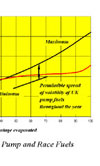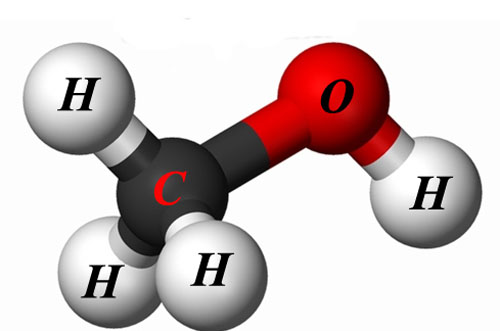Methanol - fuel of the future?
 There is increasing evidence to suggest that the real fuel of the future, especially for motor sports, is methanol. Forget all this business about electric vehicles, these, in my opinion have no real place in mainstream motorsport. Alright, electric motors can pack a mean punch and I’m sure one could derive some kind of capricious pleasure out of racing these types of machines but for raw driving experience, not forgetting spectator appeal you simply cannot beat the sound and spectacle of the internal combustion engine. And if fossil fuels are on their way out then bio-fuels are the only option left.
There is increasing evidence to suggest that the real fuel of the future, especially for motor sports, is methanol. Forget all this business about electric vehicles, these, in my opinion have no real place in mainstream motorsport. Alright, electric motors can pack a mean punch and I’m sure one could derive some kind of capricious pleasure out of racing these types of machines but for raw driving experience, not forgetting spectator appeal you simply cannot beat the sound and spectacle of the internal combustion engine. And if fossil fuels are on their way out then bio-fuels are the only option left.
Methanol, a bio-fuel I here you say? Well, strangely enough in 2009, yes! I know that methanol always used to be manufactured from the fossil fuel, natural gas and when converted into syngas (or synthesis gas – a mixture of carbon monoxide and hydrogen) it was only a short hop over a catalyst to get methanol. Today however, as a result of the increasing demand for bio-diesel, a by-product of making this product can be used for methanol manufacture. As any eco-warrior will know, bio-diesel results from the transesterification of vegetable or animal fats but a significant by-product of this process is glycerine. Used in small amounts in soap and the food industry (and given the additive number E422 – remember last month?), the industry, if you will pardon the pun, is now literally awash with the stuff. Fortunately however, there is another use for it – to make methanol or, since it comes from natural sources, bio-methanol.
To avoid wasteful disposal issues the glycerine is shipped from the bio-diesel manufacturers into the refinery, used as a feedstock for the syngas and the resulting methanol shipped out in the same tankers that brought it in. Thus wherever you see bio-diesel there’s a good chance that methanol or should we now say ‘bio-methanol’, won’t be all that far away. And as we already know, methanol in its non-bio form and as a fuel for racing has been around for very many years.

The simplest of the alcohols, methanol has many advantages over all other hydrocarbon fuels. With a higher specific energy than gasoline, it’s comparatively low heating value is more than offset by its very low stoichiometric air:fuel ratio (6.45:1). Furthermore, and while gasoline gives its maximum power at 20% enrichment, methanol will take up to 40% more to reach its peak! Better anti-knock characteristics enabling higher compression ratios (up to 16:1) and with charge temperatures kept low as a result of the very high heat of vaporisation, the only real downside to using the fuel, assuming you can cope with the extra tank capacity needed, is its highly corrosive nature. With this easily controlled by the inclusion of corrosion inhibitors, the future for methanol, bio-methanol that is, must be looking bright.
In an ironic twist of fate I always thought it unfortunate that after 40 years of using methanol, albeit derived from natural gas at the time, in 2007 Indycars transferred their allegiance to the apparently more environmentally friendly bio-ethanol. A marketing ploy or possibly even a political move designed to support the mid-west farmers will always be debated, but in a funny sort of way with its issues surrounding the diversion of grain crops towards fuel production and the increased price of food as a result, the environmental benefit or as I prefer to put it, the ‘balance of green’ has arguably swung back towards methanol again.
Politics and motorsport are frequently found together, but getting it right is often simply a matter of waiting.
Written by John Coxon.